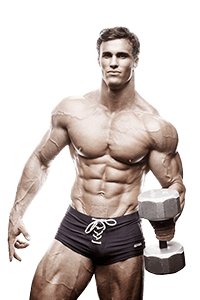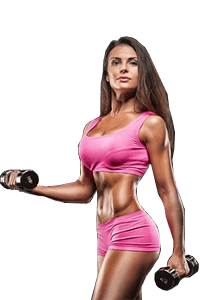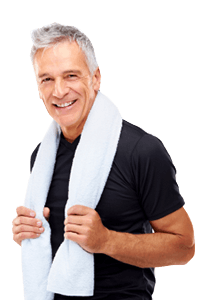At Supplements4Muscle we stock only those sports-nutrition formulas that are supported by reproducible data and manufactured in GMP-certified facilities. Whether you are a competitive athlete, a seasoned gym-goer or a weekend warrior, understanding what a supplement can and cannot do is the first step toward responsible use. This page summarises the current peer-reviewed science on nine of our best-selling product categories:
- Prohormones
- Selective Androgen Receptor Modulators (SARMs)
- Testosterone boosters
- Creatine
- Protein (whey, casein & plant blends)
- Liver-support formulas
- Fat burners / thermogenics
- Pre-workout products
- Amino acids & peptide-based ergogenics
For every group you will find:
• What it is
• How it works (mechanism of action)
• Documented benefits
• Possible risks & side effects
• Direct links to high-quality scientific sources
Nothing here is a substitute for medical advice. Always consult a qualified healthcare professional before introducing a new supplement, particularly if you compete in drug-tested sport, take prescription medication or have pre-existing medical conditions.
PROHORMONES – SCIENTIFIC OVERVIEW
What are prohormones?
Synthetic precursors that are enzymatically converted in vivo into active anabolic-androgenic hormones such as testosterone, nandrolone or trenbolone analogues. Although originally marketed as a “legal” alternative to steroids, most first-generation prohormones were placed on controlled-substance lists between 2004 and 2014.
How do they work?
• Oral absorption → hepatic 3β-HSD / 17β-HSD conversion → active hormone
• The newly formed hormone binds to cytosolic androgen receptors → DNA transcription → ↑ muscle-protein synthesis, ↑ satellite-cell activation, ↓ myostatin expression.
Benefits (documented in resistance-trained adults)
• 2-7 kg increase in lean body mass over 4-8 weeks (Brown et al., 2004)
• 5-20 % strength improvement in multi-joint lifts when combined with structured training • Faster recovery via ↓ creatine-kinase (CK) and ↓ muscle-soreness markers.
Risks & side effects
• Endogenous testosterone suppression → post-cycle hypogonadism, reduced libido
• Hepatotoxicity for 17-α-alkylated molecules (elevated ALT/AST)
• Adverse lipid profile (↓ HDL, ↑ LDL), potential ↑ blood-pressure.
Key papers
• Brown GA et al. “Effects of prohormone supplementation in humans.” Clin J Sport Med 2004.
• Schulze JJ et al. “Testosterone prohormone supplements.” Eur J Endocrinol 2006.
Disclaimer: Prohormones are banned by WADA, IOC and most federations.
SARMs – SCIENTIFIC OVERVIEW
What are SARMs?
Non-steroidal molecules that selectively activate androgen receptors in skeletal muscle and bone while sparing reproductive organs and skin.
Mechanism of action
• High affinity for the AR ligand-binding domain in myocytes → anabolic gene transcription.
• Minimal 5-α-reduction to DHT → reduced prostate stimulation; minimal aromatisation to oestrogens.
Benefits
• Lean-mass gains of 1-3 kg in 12 weeks at therapeutic doses (Gundersen et al., 2020).
• Ostarine (MK-2866) ↑ bone-mineral density and ↓ hip-fracture risk in elderly models.
• Cardarine (GW-501516 – technically a PPARδ agonist but often grouped with SARMs) ↑ fatty-acid oxidation and endurance performance.
Risks
• Moderate LH/FSH suppression after 4+ weeks; PCT often required.
• Sporadic reports of hepatotoxicity (liver-enzyme elevations return to baseline after discontinuation).
• Long-term carcinogenicity and cardiovascular safety still under investigation.
Key papers
• Narayanan R et al. “SARMs as function-promoting therapies.” Curr Opin Clin Nutr Metab Care 2009.
• US Pharmacist. “Recreational use of SARMs.” 2017.
Disclaimer: No SARM is FDA-approved for human use; all major anti-doping bodies prohibit them.
TESTOSTERONE BOOSTERS – SCIENTIFIC OVERVIEW
Definition
Botanical extracts, amino acids, minerals and vitamins that aim to optimise endogenous testosterone production in individuals whose levels are low-normal rather than clinically deficient.
Mechanisms
• Hypothalamic stimulation (D-aspartic acid, Mucuna pruriens → ↑ GnRH)
• Aromatase inhibition (zinc, boron) → ↓ oestrogen feedback • SHBG reduction (fenugreek saponins) → ↑ free testosterone
• Sleep-quality support (magnesium, ashwagandha) → ↑ nocturnal testosterone pulses.
Benefits
• Men with baseline low-normal T (<400 ng/dL) may see 10-25 % increases within 2-8 weeks.
• Associated improvements in libido, mood and perceived vitality.
• Potential small but meaningful increases in strength (2-5 %) if combined with resistance training.
Risks & caveats
• Minimal side effects (mild GI upset or acne) at recommended doses.
• Limited efficacy when baseline testosterone is already optimal (>600 ng/dL).
• Some herbs (tribulus, tongkat ali) may interact with antidepressants or antihypertensives.
Key papers
• Topo E et al. “The role and molecular mechanism of D-aspartic acid…” Reprod Biol Endocrinol 2009
• Wankhede S et al. “Examining the effect of fenugreek extract on strength and body composition.” J Sport Health Sci 2016.
CREATINE – SCIENTIFIC OVERVIEW
What is creatine?
A naturally occurring guanidino compound synthesised from arginine, glycine and methionine; stored as phosphocreatine in muscle and brain tissue.
How it works
• ↑ Phosphocreatine stores → faster ATP resynthesis during high-intensity effort.
• Cell-volumising effect → triggers anabolic signalling pathways (mTOR, MAPK).
• Neuroprotective and myoprotective actions via antioxidant mechanisms.
Benefits (supported by >1 000 studies)
• +5-15 % performance in repeated sprint / heavy lift activities.
• 1-3 kg lean-mass gain over 4 weeks largely from intracellular water & protein synthesis.
• Cognitive benefits: improved memory/processing speed in sleep-deprived subjects.
Risks & side effects
• Generally safe; the ISSN classifies creatine monohydrate as “the most effective ergogenic aid available to athletes.”
• Transient weight gain, mild stomach cramp if inadequately hydrated.
• No evidence of kidney damage in healthy individuals (Poortmans & Francaux, 1999).
Key papers
• Kreider RB et al. “International Society of Sports Nutrition position stand: creatine.” JISSN 2017.
• Rawson ES, Venezia AC. “Use of creatine in the elderly…” Curr Aging Sci 2011.
PROTEIN SUPPLEMENTS – SCIENTIFIC OVERVIEW
What are they?
Concentrated food-derived proteins (whey, casein, egg, beef, pea, rice) processed into powders for convenient ingestion.
Mechanisms
• Provide essential amino acids, especially leucine, which triggers mTOR-dependent muscle-protein synthesis (MPS).
• Whey: rapid digestion → spike in plasma amino acids → acute MPS.
• Casein: slow release → anti-catabolic during overnight fasts.
Benefits
• Meta-analysis shows additional 0.5-1.0 kg lean-mass gain and 20–35 % greater strength when ≥1.6 g protein/kg bw/day is achieved (Morton et al., 2018).
• Improved satiety and body-fat management.
• Immunoglobulins and lactoferrin in native whey may support immune health.
Risks & considerations
• Lactose intolerance → choose isolate or hydrolysate.
• Excessive intake (>3 g/kg) offers no extra benefit and may cause GI discomfort.
• No deleterious effect on kidney function in healthy individuals.
Key papers
• Morton RW et al. “Protein supplementation to augment resistance training…” Br J Sports Med 2018.
• Phillips SM. “A brief review of higher dietary protein diets…” Ann Nutr Metab 2016.
LIVER-SUPPORT SUPPLEMENTS
What are they?
Herbal extracts (milk thistle, artichoke, turmeric/curcumin), phospholipids (phosphatidylcholine), antioxidants (NAC, SAMe) formulated to protect hepatocytes and enhance phase I/II detoxification.
Mechanisms
• Silymarin (milk-thistle) stabilises hepatocyte membranes, scavenges free radicals.
• N-acetyl-cysteine replenishes glutathione, the body’s master antioxidant.
• Curcumin modulates NF-κB → ↓ inflammatory cytokines.
Benefits
• 30-50 % reduction in ALT/AST in patients with mild non-alcoholic fatty-liver disease (Loguercio et al., 2012).
• Potentially mitigates hepatotoxic stress from oral anabolics or high-protein diets.
• Improved bile flow and digestion.
Risks & side effects
• Generally well tolerated; high-dose curcumin may cause mild GI discomfort.
• NAC may interact with nitroglycerine (hypotension).
• Always monitor liver enzymes during any hepatotoxic drug/supplement regimen.
Key papers
• Loguercio C et al. “The effect of a silybin-vitamin E-phospholipid complex in NAFLD.” World J Gastroenterol 2012.
• Nuttall SL et al. “Glutathione: in sickness and in health.” Lancet 1998.
FAT BURNERS / THERMOGENICS
Definition
Formulas aimed at increasing energy expenditure, mobilising stored fat or suppressing appetite. Typical ingredients: caffeine, green-tea catechins (EGCG), synephrine, yohimbine, capsaicin and L-carnitine.
Mechanisms
• Sympathomimetic stimulation (caffeine, synephrine) → ↑ catecholamines → ↑ lipolysis.
• Mitochondrial uncoupling (capsaicin) → ↑ thermogenesis.
• Alpha-2 adrenergic antagonism (yohimbine) → enhanced stubborn-fat mobilisation.
• Carnitine facilitates fatty-acid transport into mitochondria; effect more pronounced in deficient or vegan athletes.
Benefits
• Acute metabolic-rate increase of 3-11 % with 200-400 mg caffeine (Astrup et al., 1990).
• 0.5-1.5 kg extra fat loss over 8-12 weeks when combined with caloric deficit and exercise.
• Enhanced training intensity via central-nervous-system stimulation.
Risks & side effects
• Elevated heart rate, blood pressure, potential anxiety/insomnia.
• Yohimbine may cause panic attacks in sensitive individuals.
• Tolerance develops; cycling is recommended.
Key papers
• Dulloo AG et al. “Green tea and thermogenesis.” Am J Clin Nutr 1999.
• Astrup A et al. “Caffeine and coffee: effect on metabolic rate…” Am J Clin Nutr 1990.
PRE-WORKOUT PRODUCTS
What are they?
Multi-ingredient blends delivering stimulants, nitric-oxide boosters, nootropics and electrolytes 20-30 minutes before exercise.
Key actives & mechanisms
• Caffeine + theanine → synergistic alertness without jitters.
• Beta-alanine → ↑ muscle carnosine → buffering of H+ → delayed fatigue (tingling is harmless paraesthesia).
• Citrulline malate / arginine → ↑ plasma L-arginine → ↑ nitric oxide → vasodilation and nutrient delivery.
• Tyrosine & choline donors → support catecholamine synthesis and focus.
Benefits
• +12-16 % average improvement in muscular endurance (Hoffman et al., 2008).
• Enhanced subjective energy, focus, and training volume leading to greater hypertrophy over time.
Risks & side effects
• Over-stimulation, insomnia if taken late in the day.
• Niacin flush, paresthesia from beta-alanine. • Beware of proprietary blends that hide exact caffeine amounts; avoid combining with other stimulants.
Key papers
• Trexler ET et al. “International Society of Sports Nutrition position stand: beta-alanine.” JISSN 2015.
• Gonzalez AM et al. “Citrulline supplementation…” J Strength Cond Res 2018.
AMINO ACIDS & PEPTIDE ERGOGENICS
What are they?
Isolated essential amino acids (EAAs), branched-chain amino acids (BCAAs), conditionally essential aminos (glutamine, arginine) and novel peptides such as collagen or velositol.
Mechanisms
• Leucine acts as a trigger for MPS via mTOR.
• BCAAs reduce central fatigue by competing with tryptophan for transport across the blood-brain barrier.
• L-citrulline converts to arginine → ↑ nitric oxide.
• Collagen peptides stimulate fibroblast activity → improved joint/tendon health.
Benefits
• 6 g EAAs post-workout can elevate MPS similarly to 25 g whey for 2-3 h (Tipton et al., 2007).
• 10 g collagen with vitamin C twice daily improved knee-joint pain in athletes (Clark et al., 2008). • In endurance sports, BCAAs may lower perceived exertion and DOMS.
Risks & side effects
• Very safe; excessive isolated BCAA intake without the other EAAs could theoretically reduce net protein balance.
• Individuals with maple-syrup-urine disease (rare) must avoid BCAAs.
Key papers
• Tipton KD et al. “Stimulation of net muscle protein synthesis by whey protein…” Am J Physiol 2007. https://pubmed.ncbi.nlm.nih.gov/17218495/
• Clark KL et al. “24-week study on the use of collagen hydrolysate…” Curr Med Res Opin 2008. https://pubmed.ncbi.nlm.nih.gov/18416885/
Train hard, recover smart, and supplement responsibly.




